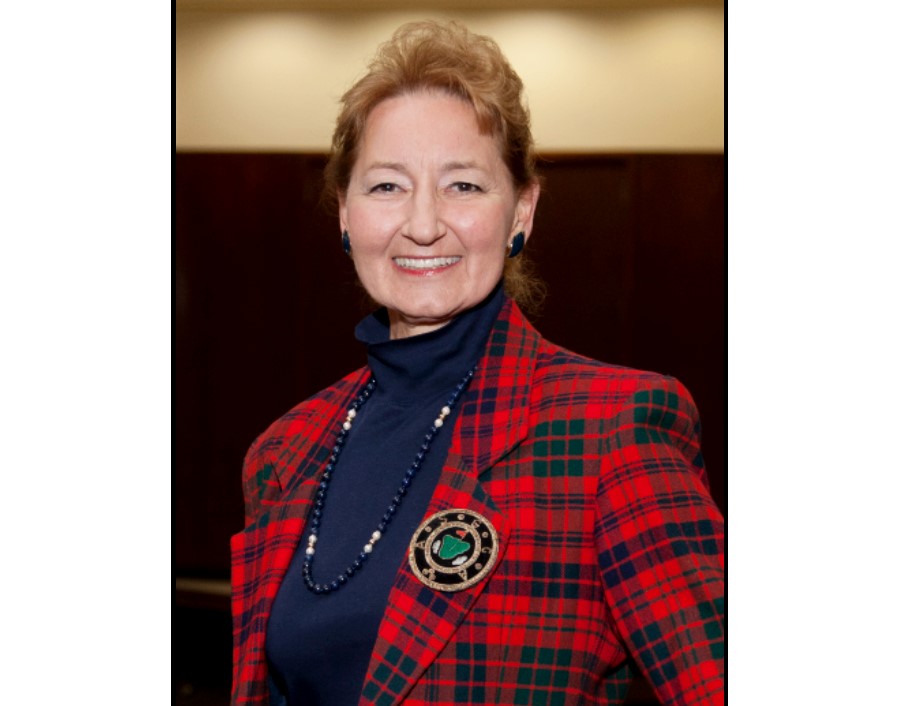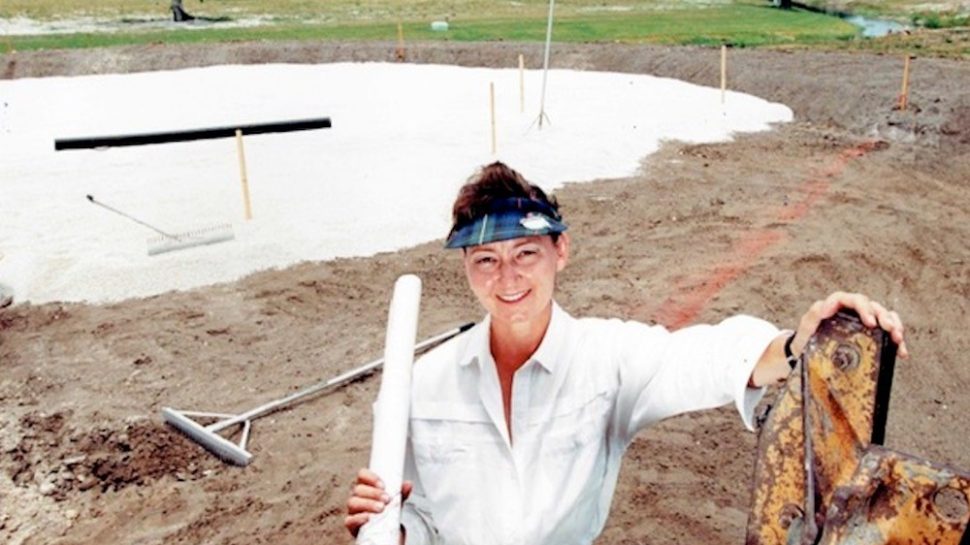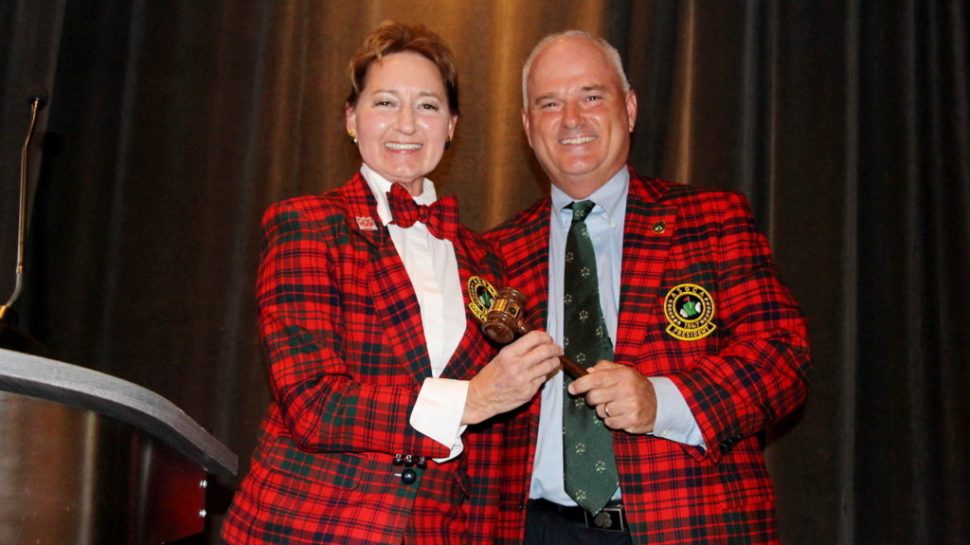Backgrounder —
Jan Bel Jan comes from a Pittsburgh, PA golf family. Her father, George Bel Jan, was a golf pro/superintendent; three of his five “in the golf business” brothers were peer-respected PGA professionals. From them, she learned the game and business of golf. Began her design career with Tom Fazio with whom she held a senior position in golf course design, construction and project management for more than twenty years. Her experience as a registered Landscape Architect, Certified Arborist and former assistant superintendent, provide her with a unique outlook on the playability, strategy, ecology, economics and aesthetics of golf courses.

Ms. Bel Jan was elected into the American Society of Golf Course Architects (ASGCA) in 1990 and was recently elected President of the ASGCA. Just the second woman to do so — the initial one being Alice Dye in 1997-1998.
Formed her golf course design firm in 2009 and is a long-time contributor to the multiple disciplines of golf. Has presented customized programs to PGA of America, CMAA and GCSAA members. Topics include “Setting Up Golf Courses for Success”, how to retain and engage more women in golf, environmental sustainability and inclusion of people with disabilities in golf. In 2013, Ms. Bel Jan was an Adjunct Professor at Hodges University, Johnson School of Business in Naples, FL. From 2012 to 2017 and a founding partner in the National Women’s Golf Alliance.
The USGA featured Jan in its 2017-2018 Golf Museum exhibit, “Breaking New Ground – Women and Golf Course Architecture”. In 2016 and 2014, she earned the American Society of Golf Course Architects’ “Design Excellence” Award. LINKS Magazine named her one of “The Top 10 Female Golf Course Architects” in March 2015, and in January 2014, she was presented with the Women In the Golf Industry’s “President’s Award.” Sports Illustrated Plus listed Jan among the “Top Ten Most Influential Women in the Game of Golf” in December 2000 and February 2005. Ms. Bel Jan’s practice is based in Jupiter, FL.
***
You wake up in the morning — what’s the driving passion?
How to do the best I can with whatever is on the agenda that day.

You were just elected President of the ASGCA — only the 2nd woman to have attained the position. What were your feelings when you found out?
My immediate reaction was one of surprise. Quickly replaced with feelings of honor and responsibility to represent my colleagues, the profession of golf course architecture, and golf in general.
How has the architectural landscape changed for women since you first entered the profession?
As in similar disciplines where math and science are as important as art and aesthetics, women are more accepted now, and are recognized as competent with a fresh perspective on design and function. But, as in most professions surrounding sports, women are still underrepresented because many golfers don’t realize that this profession exists. Or they are not willing to make the commitment to the time and education, formal and informal, required to be proficient in golf course design.
The person who had the biggest influence in your career development is who and how so?
Tom Fazio, ASGCA. When Tom hired me, he gave me an opportunity to learn from him the many facets of the business of golf course design as well as the many considerations for designing courses in a variety of geographic locations for an array of clients. We followed certain principles, but Tom expected creativity to meet the specific priorities on each site – a great way to learn!
What’s the biggest impediment now for women interested in being an architect in the golf industry?
The biggest impediment for anyone interested in being an architect in the golf industry today is the opportunity to be involved in new construction, or even a renovation. There are fewer new projects than a generation ago, so there are fewer possibilities to experience routing golf courses, using the existing conditions to meet the challenges of the sites, the clients and what is best for golf.
Closings of golf courses in America has been a steady happening since the end of The Great Recession. Do we simply need a percentage of courses to disappear permanently so the remaining one can flourish financially?
Courses were built in response to the economy of the eras and the local markets. Similarly, markets will influence where courses close. Each golf facilities is a small business. As with other businesses, they must remain relevant to those who support them or they will be among those who disappear. Course operators who appeal to their demographics will flourish.

If you could change one thing in golf unilaterally — what would it be and why?
Return bunkers to the hazards they once were.The cost of construction and maintenance of bunkers has become almost as expensive as putting greens.Those costs are passed along to the golfers
The leading golf organizations — USGA, R&A, PGA of America, PGA Tour, LPGA — are all seeking ways to attract Millennials, women and minorities to the sport. If you were counseling them what would you advise be done?
To keep and attract Millennials, women and minorities to the sport, pay attention to achievements at the grassroots level. Help those who have successful programs be more successful by supporting them in their own regions, then help others who see the value, are willing to work for the same success, but whose demographics may require the talent, time or financial support from the larger organization.
Environmentalists are quick to cite golf as an abuser of the land, using far too much water and applying unneeded pesticides. How do you see the two sides reconciling and what role do you see yourself playing in this situation?
In 1996, representatives from leading golf organizations and prominent environmental organizations met for the first time to discuss golf and the environment. Each group learned from the other and created “Environmental Principles for Golf Courses in the United States.” Quite a feat, given +/- 400 participants. Not only were these principles endorsed by the the participating organizations, but the three additional summits were held (1998, 2000 and 2002) to continue science-based joint education, share best practices and case study successes. I see myself as a life-long learner, willing to listen and share peer-reviewed studies.
Best advice you ever received — what was it and who from?
“Your attitude is the only thing over which you have any control. It’s not always easy, but choose the attitude you would want to be around.”
– George Bel Jan (my father)
***
For more info go to:
